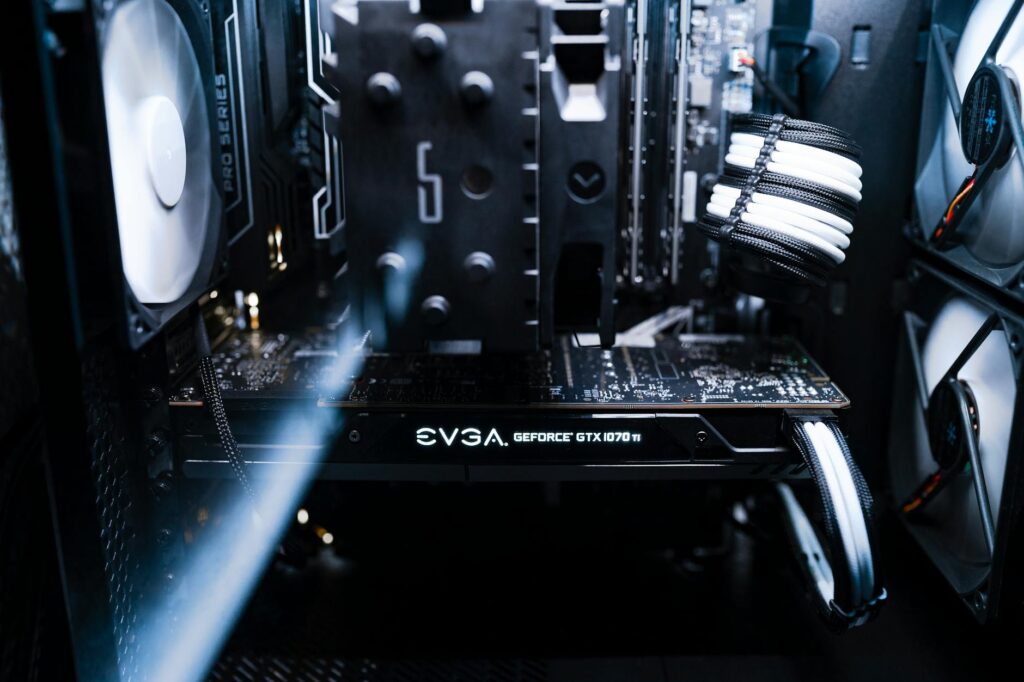The Unseen Tollbooths on Your Money Highway
Ever felt that gut-punch of a wire transfer fee? You know the one. You’re sending money to a loved one or paying an invoice, and a significant chunk just… vanishes. Poof. Gone into the ether, swallowed by a system you don’t fully understand. Or maybe you’ve waited three to five business days for a critical payment to clear, drumming your fingers on your desk, wondering why digital information moves slower than a handwritten letter in the 19th century. These frustrations aren’t bugs in the system; they’re features. They are the price of admission for using the global financial network, a network controlled by a powerful and exclusive club: centralized financial intermediaries. For decades, we’ve had no other choice. They were the only game in town. But that’s changing, and the agent of that change is cryptocurrency.
Key Takeaways
- What They Are: Centralized financial intermediaries are the traditional gatekeepers of money—banks, payment processors, and brokers—that control the flow of capital.
- The Problem: This monopoly leads to high fees, slow transaction times, financial exclusion for billions, and a lack of true ownership over your own assets.
- The Challenger: Cryptocurrency, powered by blockchain, offers a decentralized alternative that enables direct, peer-to-peer transactions without a middleman.
- The Impact: This shift is fostering lower costs, near-instant global payments, greater financial inclusion, and the rise of a new ecosystem called Decentralized Finance (DeFi).
What Are We Really Talking About? The Old Guard of Finance
Before we can appreciate the revolution, we need to understand the regime. Centralized financial intermediaries are exactly what they sound like. They are the central authorities that sit between you and your money, or between you and the person you’re trying to transact with. Think about it. When you swipe your credit card, the money doesn’t just teleport from your account to the coffee shop’s. Oh no. It goes on a wild journey through a network of intermediaries: your bank, the merchant’s bank, the card network (like Visa or Mastercard), and payment processors. Each one takes a tiny slice of the pie. A toll for using their road.
These institutions include:
- Commercial Banks: Where you keep your savings, get loans, and cash checks. They are the foundation of the modern financial system.
- Investment Banks: The giants that handle mergers, acquisitions, and underwriting for large corporations.
- Payment Processors: Companies like PayPal, Stripe, and Square that facilitate digital payments.
- Remittance Services: Services like Western Union that specialize in cross-border payments, often with exorbitant fees.
- Brokerages: Firms that allow you to buy and sell stocks, bonds, and other traditional assets.
For centuries, they’ve been indispensable. They provide trust, security, and the infrastructure for global commerce. They built the highways, so they get to set the tolls. The problem is, those highways are getting old, congested, and the tolls keep going up.
The Cracks in the Ivory Tower: Inefficiencies We’ve Come to Accept
We’ve become so accustomed to the quirks of traditional finance that we often don’t even question them. It’s just ‘how things work.’ But when you stop and look, the inefficiencies are glaring.
Exorbitant Fees: The ‘death by a thousand cuts’ model. Overdraft fees, wire transfer fees, foreign transaction fees, account maintenance fees, brokerage commissions. Each intermediary in a transaction chain needs its cut, and that cost is ultimately passed on to you, the end-user. Sending $200 across a border can sometimes cost you $20 or more. That’s a 10% tax just for moving your own money.
Glacial Speeds: The term ‘3-5 business days’ is a relic of an analog era. In a world of instant messaging and fiber-optic internet, there is no technological reason a transfer of value should take days to settle. The delay is due to outdated systems like ACH (Automated Clearing House) that process transactions in batches, and the complex web of verifications between different banks that don’t always talk to each other efficiently.
The Wall of Exclusion: This is perhaps the most significant failure. According to the World Bank, roughly 1.4 billion adults are unbanked. They have no access to basic financial services. Why? They might lack the proper identification, live too far from a physical bank, or not have enough money to meet minimum balance requirements. They are locked out of the global economy, unable to save securely, get credit, or build a financial future. The system wasn’t built for them.
Censorship and Control: Because these institutions are centralized, they represent single points of failure and control. Governments can pressure banks to freeze accounts. Payment processors can de-platform businesses or individuals they deem controversial. You don’t truly have final say over your funds; you have a claim on an IOU from the bank.

The Decentralized Challenger Steps into the Ring
So, what’s the alternative? This is where cryptocurrency makes its grand entrance. At its core, a cryptocurrency like Bitcoin or Ethereum is not a company. It has no CEO, no headquarters, no board of directors. It’s a software protocol run by a global, distributed network of computers. This is the concept of decentralization.
Instead of a central ledger kept in a bank’s private server, transactions are recorded on a public, distributed ledger called a blockchain. Every participant on the network has a copy of this ledger, and it’s secured by cryptography, making it incredibly difficult to alter or cheat. When you send crypto to someone, you aren’t asking a bank for permission. You are broadcasting a transaction directly to the network. Miners or validators (the computers running the software) confirm the transaction is legitimate and add it to the blockchain. The middleman is simply… gone. It’s a peer-to-peer system for value, much like how the internet was originally a peer-to-peer system for information.
The Knockout Blows: How Crypto Is Challenging Centralized Financial Intermediaries
Cryptocurrency isn’t just a new type of asset; it’s a fundamental reimagining of the financial rails themselves. It attacks the monopoly of centralized financial intermediaries on multiple fronts.
Cutting Out the Costly Middleman
Remember that complex web of banks and processors taking a cut of your coffee purchase? With crypto, the transaction can be as simple as you and the coffee shop. Using a crypto wallet on your phone, you can scan a QR code and send the payment directly. While there are still network fees (to compensate the miners/validators), they are often a fraction of the cost of traditional systems, especially for large or international transfers. Sending a million dollars in Bitcoin costs the same in network fees as sending ten dollars. Try telling that to your bank’s wire department. This disintermediation is a direct threat to the business model of institutions that thrive on being the go-between.
Banking the Unbanked and Global Access
What do you need to access the crypto economy? An internet connection and a smartphone. That’s it. You don’t need a government ID, a proof of address, or a minimum deposit. You can download a free wallet app and instantly have the ability to send, receive, and store value globally. For the 1.4 billion unbanked, this is revolutionary. A farmer in a remote village can now receive payment from a buyer across the world without a bank account. A freelance developer in a country with a volatile currency can be paid in a stablecoin (a type of crypto pegged to a stable asset like the US dollar) and protect their earnings from inflation. It’s permissionless finance for a globalized world.
Transactions at the Speed of Light (Almost)
Forget ‘business days.’ Blockchain networks operate 24/7/365. While transaction confirmation times can vary depending on the specific cryptocurrency and network congestion (from a few seconds on networks like Solana to around 10 minutes for Bitcoin), they represent a massive leap forward. A cross-border payment that once took a week can now be settled in minutes. This speed unlocks new possibilities for commerce, payroll, and global trade, eliminating the frustrating and costly delays of the legacy system.
DeFi: An Entirely New Playground
This is where things get really interesting. Decentralized Finance, or DeFi, is an entire ecosystem of financial applications being built on blockchain platforms like Ethereum. Think of it like financial LEGOs. Developers can create applications for lending, borrowing, trading, and earning interest without any central intermediary.
You can lend your crypto out and earn interest directly from a borrower via a smart contract. You can trade one asset for another on a decentralized exchange (DEX) without ever giving up custody of your funds to a third party. It’s an open-source, transparent, and permissionless financial system running in parallel to the old one.
You Are the Bank: The Power of Self-Custody
In the traditional system, your money in the bank isn’t truly yours. It’s a liability on the bank’s balance sheet. With cryptocurrency, you have the option of ‘self-custody.’ By controlling the private keys to your crypto wallet, you have absolute, sovereign control over your assets. No bank can freeze your funds, and no government can seize them without your keys. This is summed up by the popular crypto mantra: “Not your keys, not your coins.” This concept of true digital ownership is a profound shift in the power dynamic between individuals and financial institutions.

It’s Not a Flawless Victory… Yet
Of course, the transition isn’t without its massive challenges. To ignore them would be irresponsible. The crypto world is still the Wild West in many ways.
- Volatility: The prices of many cryptocurrencies can swing wildly, making them difficult to use as a stable medium of exchange for everyday transactions.
- User Experience (UX): Using crypto can be complex. Managing private keys and understanding wallet security has a steep learning curve compared to tapping a credit card. Making a mistake, like sending funds to the wrong address, is often irreversible.
- Scalability: Some major blockchains, like Bitcoin and Ethereum, can get congested, leading to slower transaction times and higher fees during peak demand. While solutions are being developed, this remains a hurdle to mass adoption.
- Regulatory Uncertainty: Governments around the world are still figuring out how to approach cryptocurrency. This lack of clear rules creates uncertainty for both users and builders in the space.
Conclusion: A Shift in Power Is Underway
So, will cryptocurrency completely replace banks tomorrow? No. The established system is deeply entrenched, and for many everyday uses, it works just fine. But the monopoly is broken. For the first time in modern history, there is a viable, global, and open-source alternative to the closed ecosystem of centralized financial intermediaries.
Cryptocurrency is more than just a new asset class; it’s a fundamental challenge to the status quo. It’s a system that prioritizes open access over exclusivity, transparency over opacity, and individual sovereignty over institutional control. The pressure is on. The old guard is being forced to innovate, lower fees, and improve services in response to this new competition. Whether you’re a crypto enthusiast or a skeptic, one thing is clear: the conversation about money has changed forever. The tollbooths are being dismantled, one block at a time.


